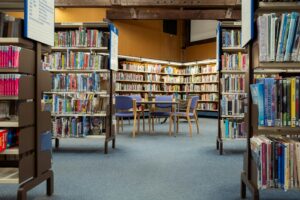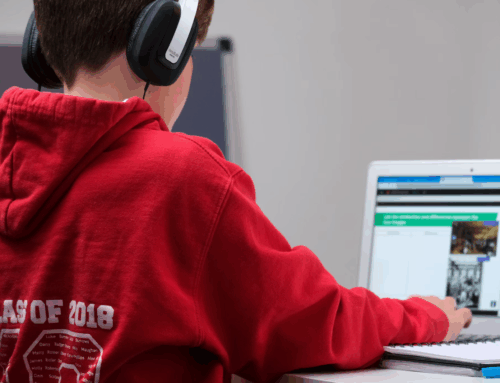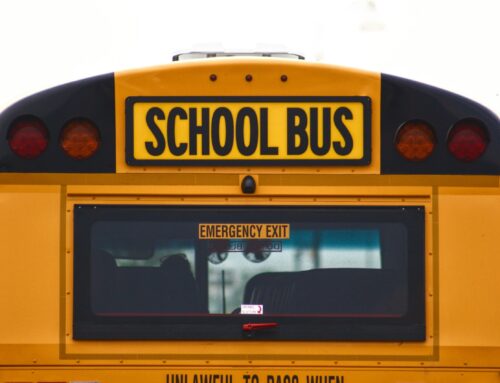 A school tour is an exciting moment in any parent’s life—a glimpse into where their child might spend the next several years learning, growing, and finding their place in the world. Parents peek into classrooms buzzing with color and curiosity, glance through the gym and music rooms, and step into the library—the quiet heart of the school, lined with books that promise imagination, discovery, and possibility. But what many parents don’t realize is that this heart often beats on its own. Across the country, countless school libraries no longer have a certified librarian—someone to curate diverse stories, nurture research skills, and help students fall in love with reading. So, as you tour your child’s future school, take a moment to look beyond the shelves. Ask the question few people think to ask: Who’s helping students find the stories that shape them?
A school tour is an exciting moment in any parent’s life—a glimpse into where their child might spend the next several years learning, growing, and finding their place in the world. Parents peek into classrooms buzzing with color and curiosity, glance through the gym and music rooms, and step into the library—the quiet heart of the school, lined with books that promise imagination, discovery, and possibility. But what many parents don’t realize is that this heart often beats on its own. Across the country, countless school libraries no longer have a certified librarian—someone to curate diverse stories, nurture research skills, and help students fall in love with reading. So, as you tour your child’s future school, take a moment to look beyond the shelves. Ask the question few people think to ask: Who’s helping students find the stories that shape them?
Well, recently—no one. Amid the book banning and curriculum restrictions of recent years, school librarians have been under fire like never before. However, these limitations are just another blow to a profession that has been experiencing a 20% decline for the past decade.[1] The thing is, the number of students and other staff is increasing, not decreasing. But now, only 30% of schools have librarians,[2] even if 87% of public schools have some sort of library or media center.[3] When these libraries are unstaffed, they are often closed to students for most of the school day. When they are open, they’re typically staffed by teachers or other supplemental staff without the proper training or knowledge, and who are already overworked and are now taking on an extra responsibility.
Well-funded library programs are strongly associated with better student learning outcomes, yet library budgets across America are being cut. More than fifty years of research across more than sixty studies indicate that students with access to well-resourced school libraries with certified librarians consistently perform better academically and score higher on standardized assessments—a finding that remains true when controlled for socioeconomic status.
Missing school librarians are even more prevalent in the American West, Midwest, and in urban and rural areas. Districts with higher levels of poverty, more minority students, and more English language learners were less likely to have librarians, with majority Hispanic districts twice as likely to be without a librarian. And inequities of access to library services for K–12 students are growing. With the profession declining, another trend has become clear: 9 out of 10 districts that eliminated all librarians by 2015–16 had not reinstated them by 2018–19, suggesting, once gone, librarian positions seldom return.[4]
School libraries have incredible impacts on literacy, learning, and engagement. Although some students may have trouble motivating themselves to engage with learning in a classroom environment, you’d struggle to find anyone who doesn’t like to learn. Libraries can engage students with learning by allowing them to research subjects and concepts they enjoy on their own terms. A trained librarian will have a foundational understanding of how to build a strong collection, provide equitable access to a variety of materials (like short-form content, read-along books, audiobooks, and graphic novels), and engage students with reading on their own terms.[2] This is a foundation that many teachers and temporary staff haven’t been taught, and something that we shouldn’t expect them to have to learn—after all, you wouldn’t expect a dentist to give you an on-the-fly flu treatment, or a brass band’s lead trumpet to start riffing on the guitar!
So, we know that school librarians cannot be replaced by other staff, but what exactly does a school librarian do? Beyond promoting strong reading habits or serving as a safe, quiet space for students, school libraries are critical in building research skills and digital literacy. Libraries often introduce students to civic literacy by engaging in community service, encouraging fact-checking, and teaching students how to detect misinformation.[4] According to the American Library Association (ALA), a school librarian is a staff member responsible for “empowering all members of the learning community to become critical thinkers.” This includes:
- Collaborating and co-teaching with classroom educators.
- Developing and maintaining a learning environment that is fun, inviting, safe, flexible, collaborative, inclusive, and conducive to learning.
- Championing equity, access, and intellectual freedom by developing a diverse collection of physical and online resources, including audiobooks, e-books, large print, and read-along.
- Fostering exploration, discovery, creation, and innovation in a growth mindset.
- Empowering learners to work with each other constructively, including giving feedback.
- Teaching all members how to engage with and use information in a globalized world.
- Modeling and developing a commitment to respecting equity, diversity, and inclusion.
- Supporting learners as they make meaning for themselves by collecting, organizing, and sharing resources.
- Evaluating, introducing, and modeling emerging technologies for the learning community.
As the world becomes increasingly global, and technology and media are a bigger part of students’ lives than ever before, these skills are invaluable. Misinformation, “brainrot” content, and the disconnect between media and the “real world” are huge problems, and we need librarians now more than we’ve ever needed them. Advocating for school librarians is the only way to push back against this issue.
If you are a US classroom teacher, specialist, school administrator, or educational decision maker concerned about the quality of students’ access to reading materials, find out how you can ensure that school librarians’ work is specified in your state or district-level Every Student Succeeds Act (ESSA) Plan. By incorporating language related to school librarians and libraries in ESSA, we can help to support all students and educators in having access to the print and electronic resources and the instructional support they need to succeed.[5]
If you are a policymaker or parent, you can help push for policies that will protect school libraries. One such way is to increase funding. Some school libraries receive state funding, while others receive funding from their school or school district. School libraries tend to fall victim to budget cuts or a lack of funding. To be considered effective, funding streams should cover a full-time, state-certified school librarian; up-to-date physical and digital materials; and professional development and collaborative opportunities for school librarians. Another is to require the presence of school librarians. Some states, such as Maryland and Nebraska, require school districts to have certified school librarians at all their schools. States with these mandates employ more librarians than states without them. Codifying the importance of school librarians in mandates would ensure that adequate funding is provided. [4]
Publishing Solutions Group
At PSG, we understand that a school library is more than a room of books—it’s a dynamic hub for learning and discovery. We recognize the critical importance of supporting certified librarians, the essential guides who curate resources and nurture lifelong skills.
This understanding directly shapes how we partner with our clients. We develop content that doesn’t just sell a product but demonstrates how that product’s solutions are vital to a modern, functioning library. Our goal is to craft narratives that show how your tools and resources empower librarians, enhance digital literacy, and help create the inclusive, well-resourced environments students need to thrive.
We are here to build content that positions your brand as a key partner in expanding library capabilities, ensuring your products are considered indispensable to the future of education.
[1] https://www.publishersweekly.com/pw/by-topic/childrens/childrens-industry-news/article/93913-stopping-the-slide.html
[2] https://www.saveschoollibrarians.org/where_have_all_the_school_librarians_gone
[3] https://nces.ed.gov/surveys/ntps/estable/table/ntps/ntps2021_sflt04_s1s
[4] https://www.americanprogress.org/article/investing-in-school-libraries-and-librarians-to-improve-literacy-outcomes/
[5] https://www.literacyworldwide.org/blog/literacy-now/2017/02/08/closing-the-gaps-school-librarians-and-the-what-s-hot-report
Photo by Metin Ozer for Unsplash.




